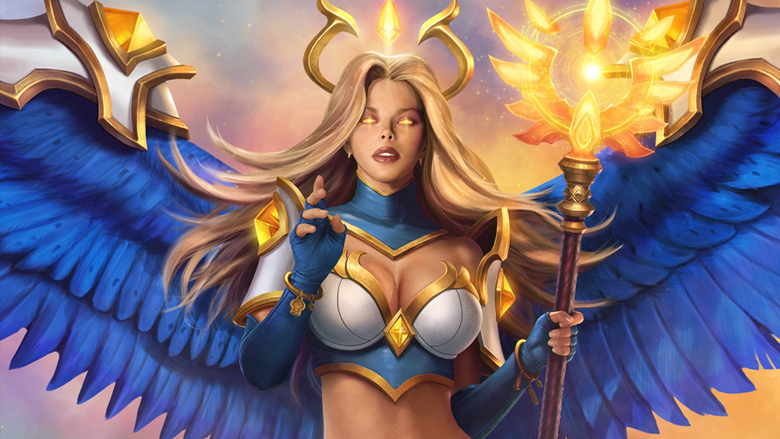My.com : the first two weeks and the volume of traffic from 20,000 installations are key for the project
About the launch of game projects, what a good marketer should know, as well as about the work of the mobile product marketing department in My.com , – said its head Peter Kireev.

Art: Juggernaut Wars
Hi! Let’s start with dating. Please tell me what you do in My.com/Mail.Ru Group?

Peter Kireev
Hi! I run the marketing department in the ITT department, which promotes browsers, social networks and affiliate programs. Since 2013, ITT’s marketing department has also been managing all of the company’s mobile gaming projects. If we generalize, then I am steering the operational marketing process and everything that is about.
Since we’re going to talk about marketing now, let’s define the terms while we’re on shore. What is it? And how is marketing different from operational marketing?
Marketing is a set of business tools through which a product begins to generate profit or increases its volume.
Operational marketing (as we call it at home) is internal processes and their management.
What should a good marketer know?
Ideally, where the paying traffic is buried and what kind of spoon it is. In general, it is worth talking not about bad and good marketers, but about the abilities, skills and ability to use them effectively.
Analytical and communicative skills are perhaps one of the strongest tools of a marketer. You need to be able not only to negotiate, but also to analyze information, build cause-and-effect relationships, and deal with numbers.
What tasks does the operational department of mobile gaming marketing solve specifically in your company?
The main tasks are located in the border areas of responsibility of different departments. At their junction, we get a buffer zone, which is managed by operational marketing.
From 2013 to 2016, we launched more than a dozen mobile game projects from different studios within the company.
Only in 2016 there were two releases (Juggernaut Wars and Jungle Clash), about three more projects are on the way. The pace, as you understand, is high, and the role of people who coordinate the whole process is very important.
Jungle Clash
In addition to simply receiving and transferring the “goods”, our job is to develop and implement a product promotion strategy. Define and coordinate tasks and KPIs for all related departments (procurement, PR, product), provide analytics, conduct seminars and workshops — our tasks include all this and much more.
If you go a little deeper into history, it all started with the launch of the first project — Jungle Heat. In total, in 2013, we launched three mobile games and caught a bunch of bigwigs: a large company, an unknown market, lack of our own traffic in the Western market and expertise in general. During the launch process, we set out to create a unique tool that will allow us not to miss a single detail. Using the accumulated experience, we have developed regulations for launching mobile projects. Now this is the most important mechanism for us to work with projects.
The regulations themselves include 5 main stages of the project’s life (alpha launch, friends and family, soft launch, global launch, etc.), 8 major stages and about 150 sub-items, while the sub-items have their own separate details.
How many people are in the marketing department, how many of them are directly engaged in game marketing? How are the roles in the department divided, what specializations do the employees have?
When forming the mobile marketing department, I was guided by the idea of consolidating expert links in one team — this is correct in the conditions of such buffering. It turned out not just to organize an operational division, but to put on stream service services, including SMM, PR, design and analytics. Now there are 15 people in the department: two SMM fighters, three designers, two PR managers, two analysts, four brand managers, two traffic managers (not procurement). In the near future, we plan to supplement the department with an art director: its main task will be communication with art directors of projects and setting the production flow of composite graphic materials.
At first, we used a horizontal process management system. But, since the responsibility was greatly blurred at the same time, we made a strong-willed decision to switch to some kind of vertical gradation.
There is an opinion that a marketer works more effectively when he works closely with a team, is part of it. You have marketing tasks for the development studio, in fact, are external. Why did you choose this approach?
To work closely with a team, it is not necessary to be inside it. I will give an example of how Anton Gritsevsky, brand manager of Juggernaut Wars, organized work with the project team. While working on determining the positioning of the project, he began to conduct workshops, involving the team in them. As a result of collaboration, it turned out to find visually advantageous solutions for potential users. As a result, all Juggernaut Wars advertising campaigns have a high engagement rate.
In general, the whole process of preparing for the launch of Juggernaut Wars was indicative. The project is niche, the niche has been mastered, competitors are actively appearing. How to promote such a product and what to grab?
Inside the marketing department, we organized several working teams and began to work out all possible directions of promotion. There were a lot of ideas for the implementation and pumping of the project: from the release of a special comic about heroes to the history of pre-orders. But the key to promoting the project was its visual component: a cool picture and advanced graphics.
Juggernaut Wars
We assembled a team to study the potential audience. Survey methods, Audience Insights on FB and other analytical tools were used. So we got portraits of users, divided them into groups and created unique “hooks” for each group. We laid the interests of the user himself as the basis, so we were able to build the positioning of the product more effectively.
How do you solve conflicts between marketers and development? Who’s in charge?
Conflicts are one of the fastest and most effective ways to achieve a goal. The task of operational marketing is to make this process transparent. The regulations help us in this, which is essentially a checklist with clear tasks, deadlines and certain areas of responsibility. We try to sort everything out as much as possible and explain why this is the case and not otherwise.
What are the marketing stages before the launch of the project (what should a marketer do before the launch of the game)?
There are six main stages in the marketing regulations. Three of them are before the launch: these are the already mentioned alfa launch, friends and family and soft launch. The whole process is regulated: deadlines, results and a guide to action are defined for each stage.
For example, the process of determining the positioning of a project is always a fundamental work, and it begins more than six months before the launch. As a result, we define several positioning options (this is included in the KPIs of brand managers), which are checked at the soft launch stage.
100500 articles have already been written about soft launch, but not so much about alfa launch and f&f, so I’ll tell you about them in a little more detail.
At the alfa launch stage, we are doing preparatory work and edits; at this time, the project is available to a very, very limited audience. Recently we started to upload the application in stores, but with access only by special code.
At the f&F stage, we offer to participate in testing to all employees of the company. The main task during this period is to identify critical bugs and track conversion rates as the project progresses.
How do you build project support after launch, what do you do, what do you measure, what do you pay attention to?
Heroes of Utopia
The first two weeks and the volume of traffic from 20,000 installations are key for the project. We look at engagement, the percentage of payers and ARPU: this data is enough to find a weak parameter and make a decision. Work begins on optimizing the landing page and purchasing traffic, working with creatives, analytics.
The main indicators for us are CPI and retention. For example, the CPI of purchased traffic may exceed the projected LTV of the project only with a certain percentage of whales from this traffic source, there are no other conditions. Retention is not lower than 30% and 10% of the first and seventh days, respectively. Again, there are conditions for combining indicators, but this is a topic for a separate discussion.
Thanks for the interview!


